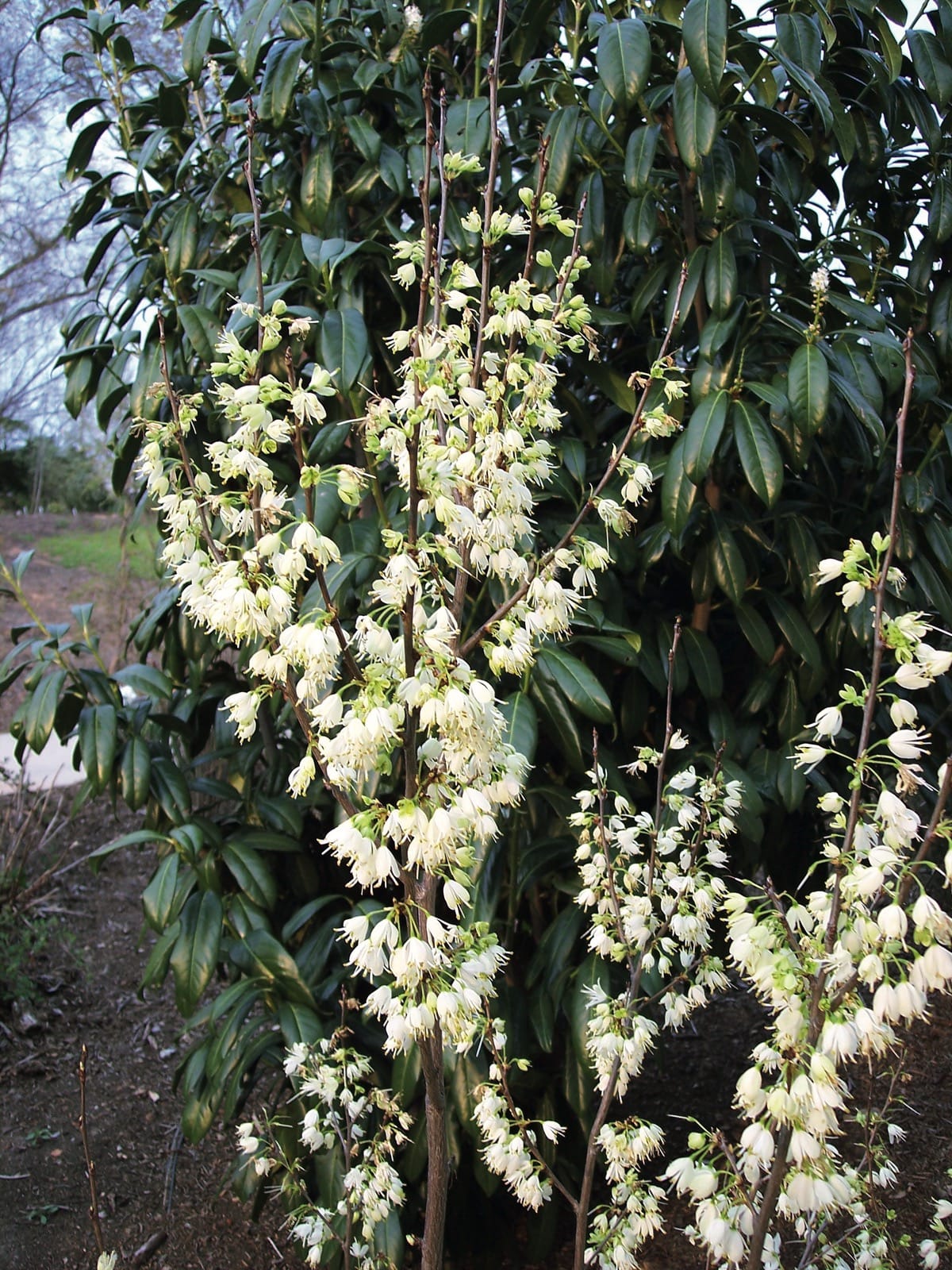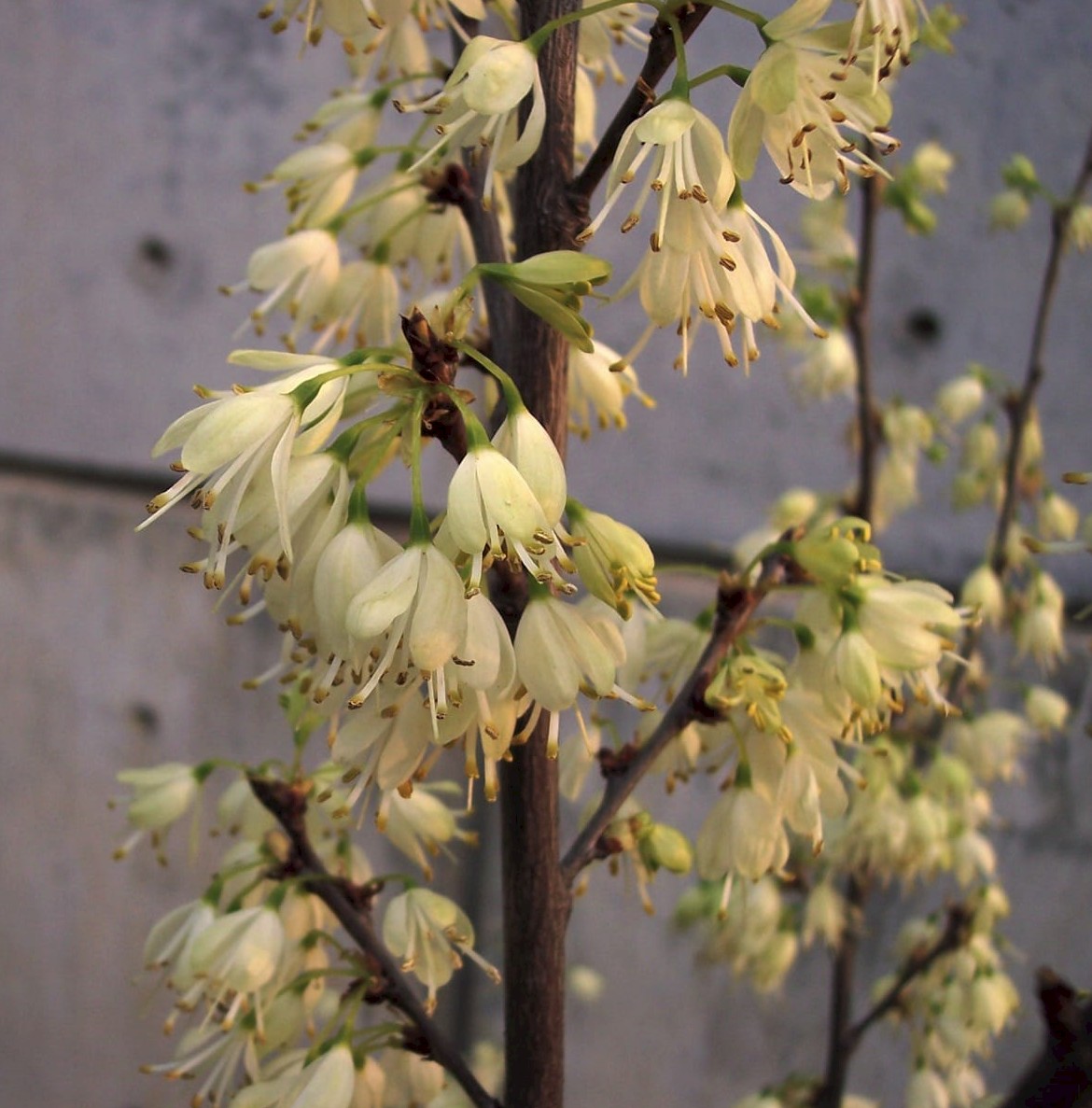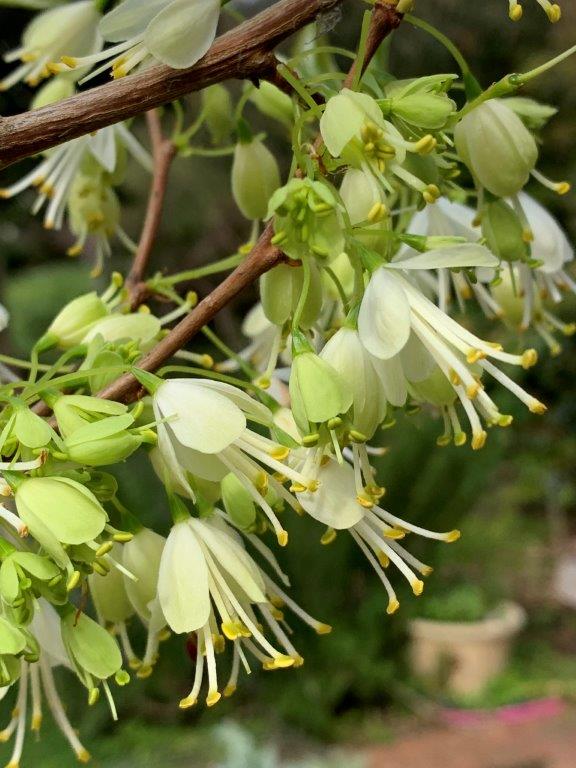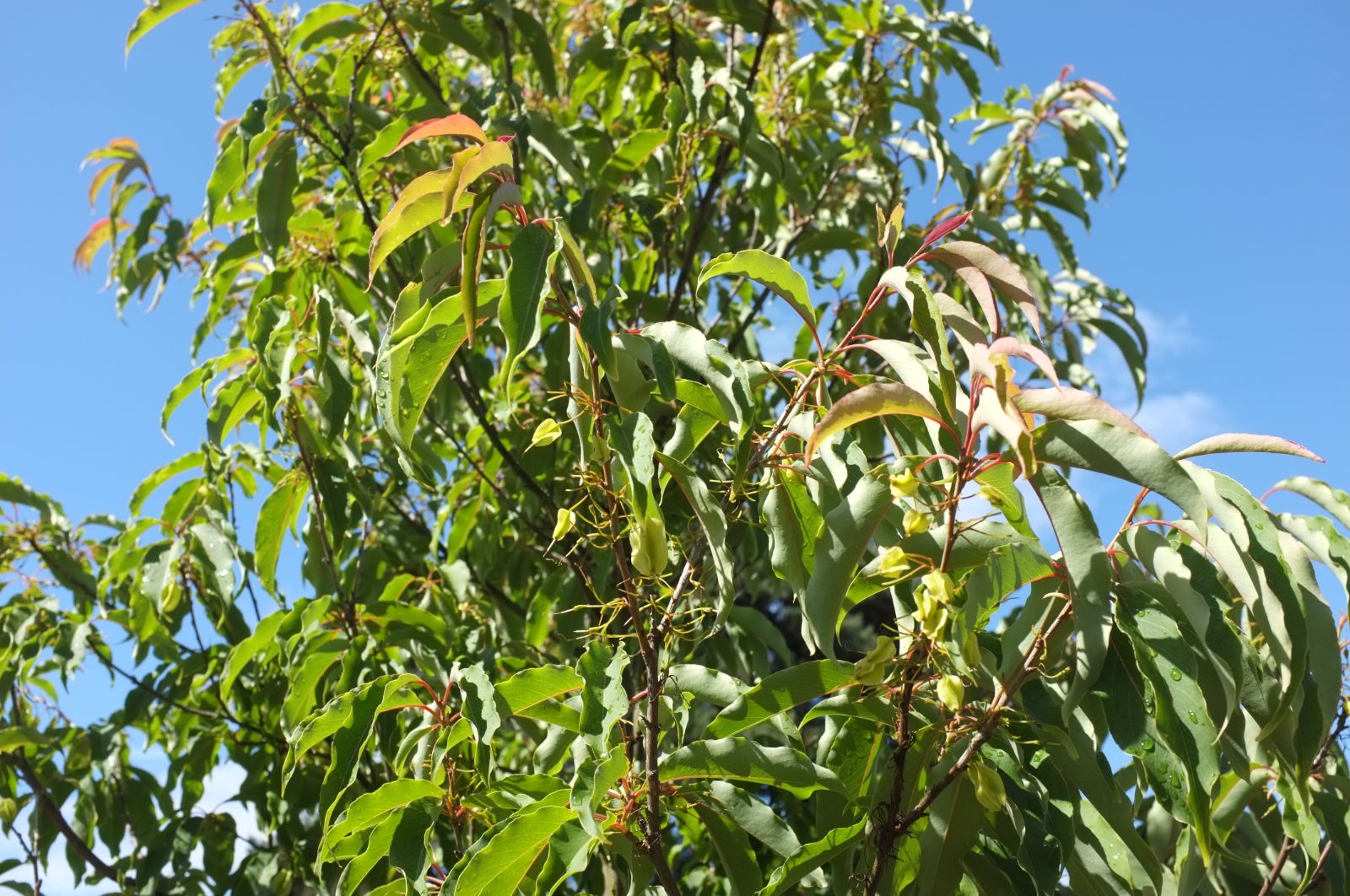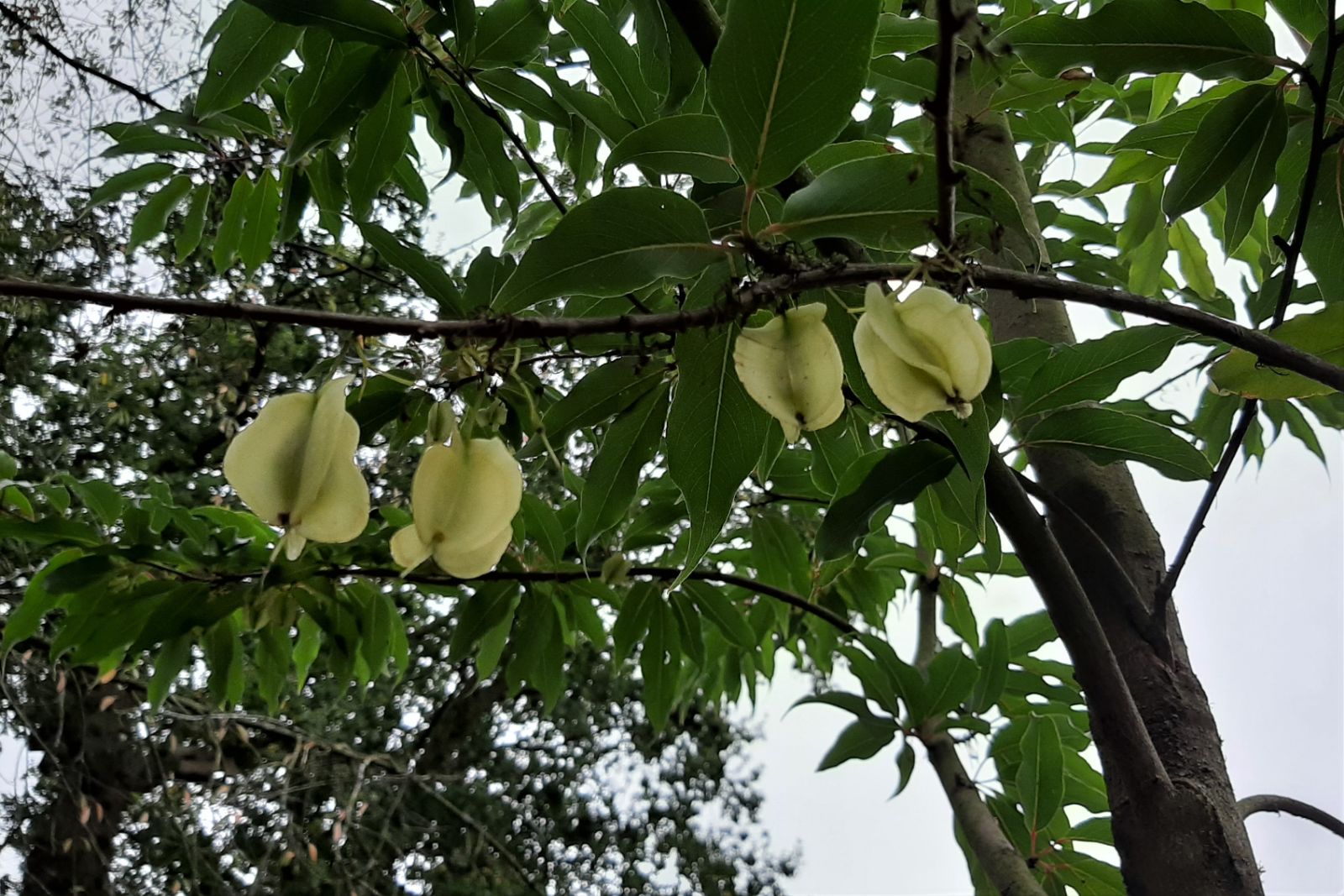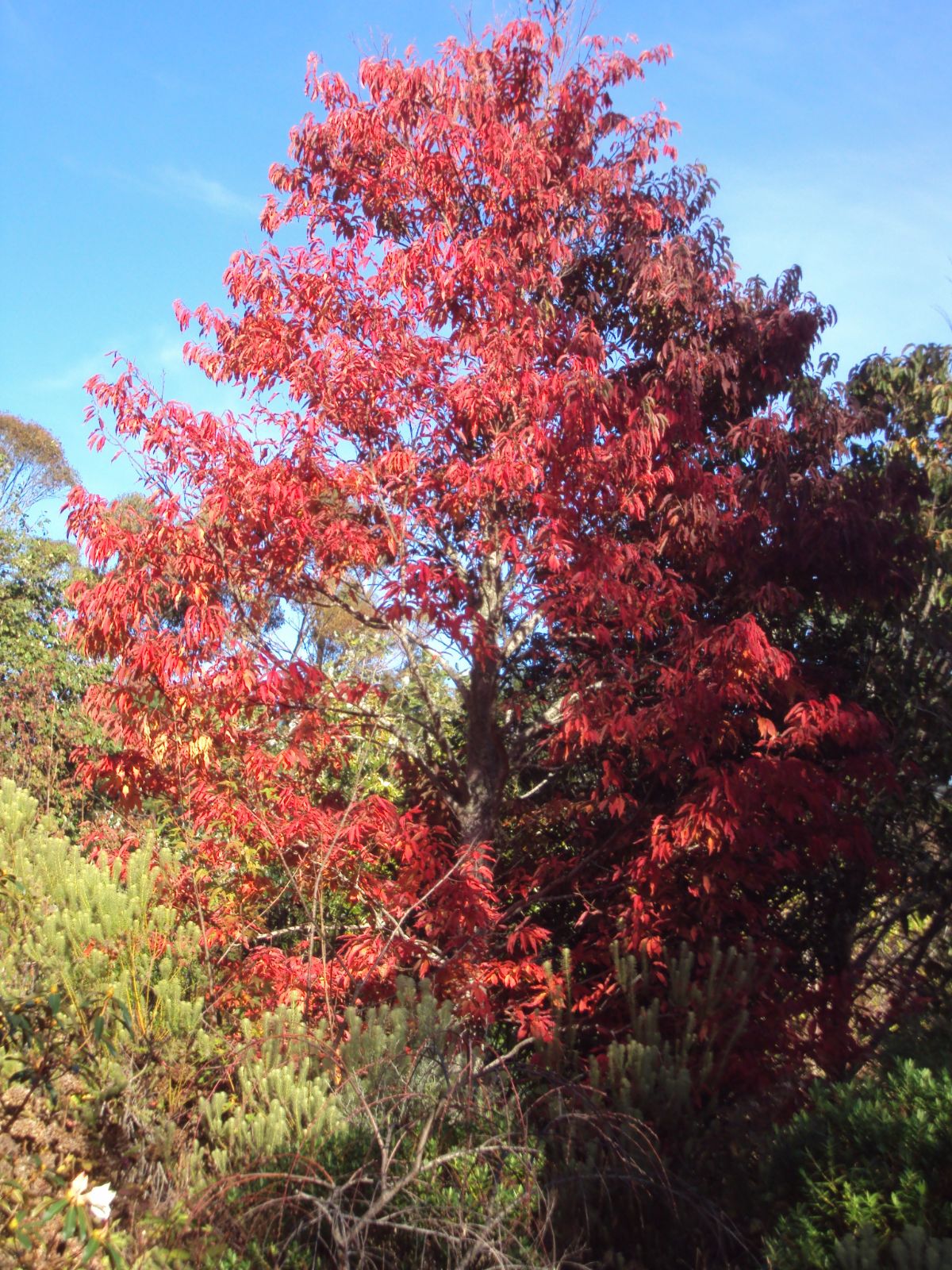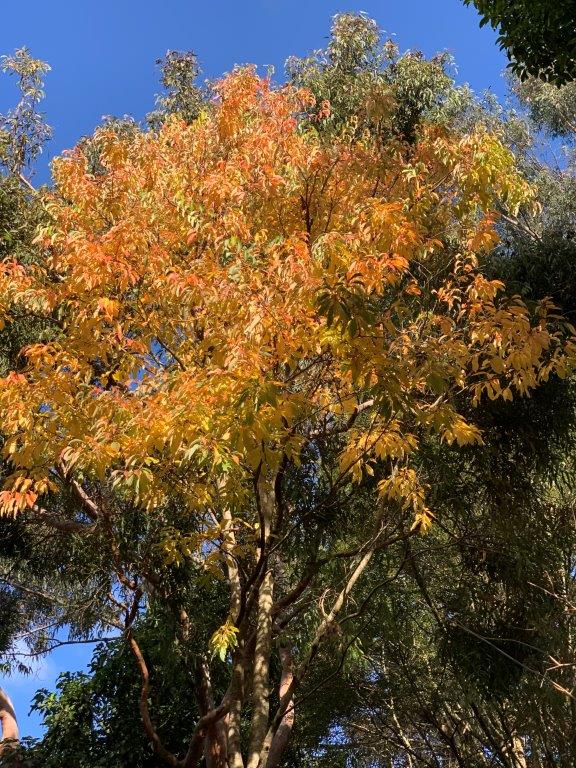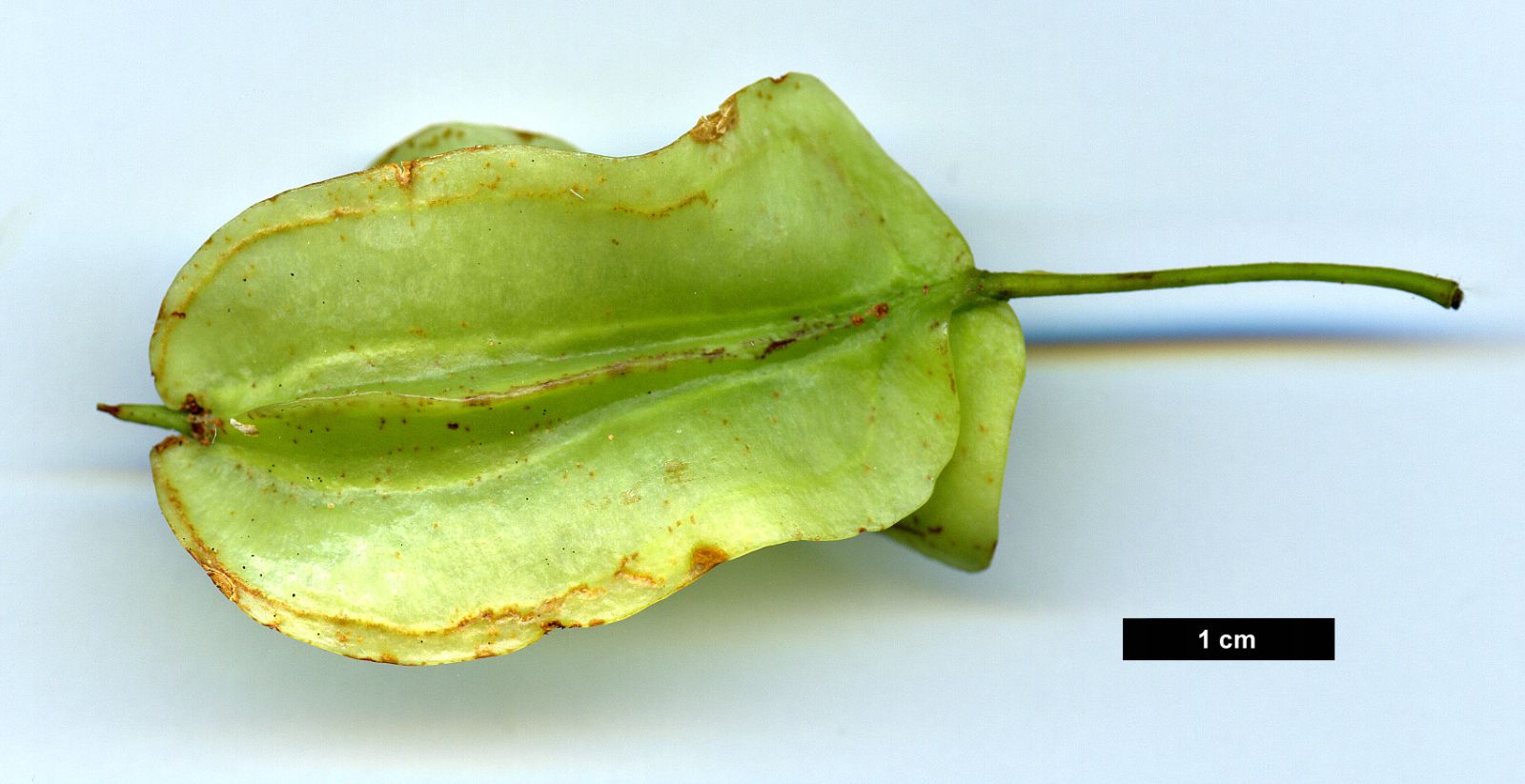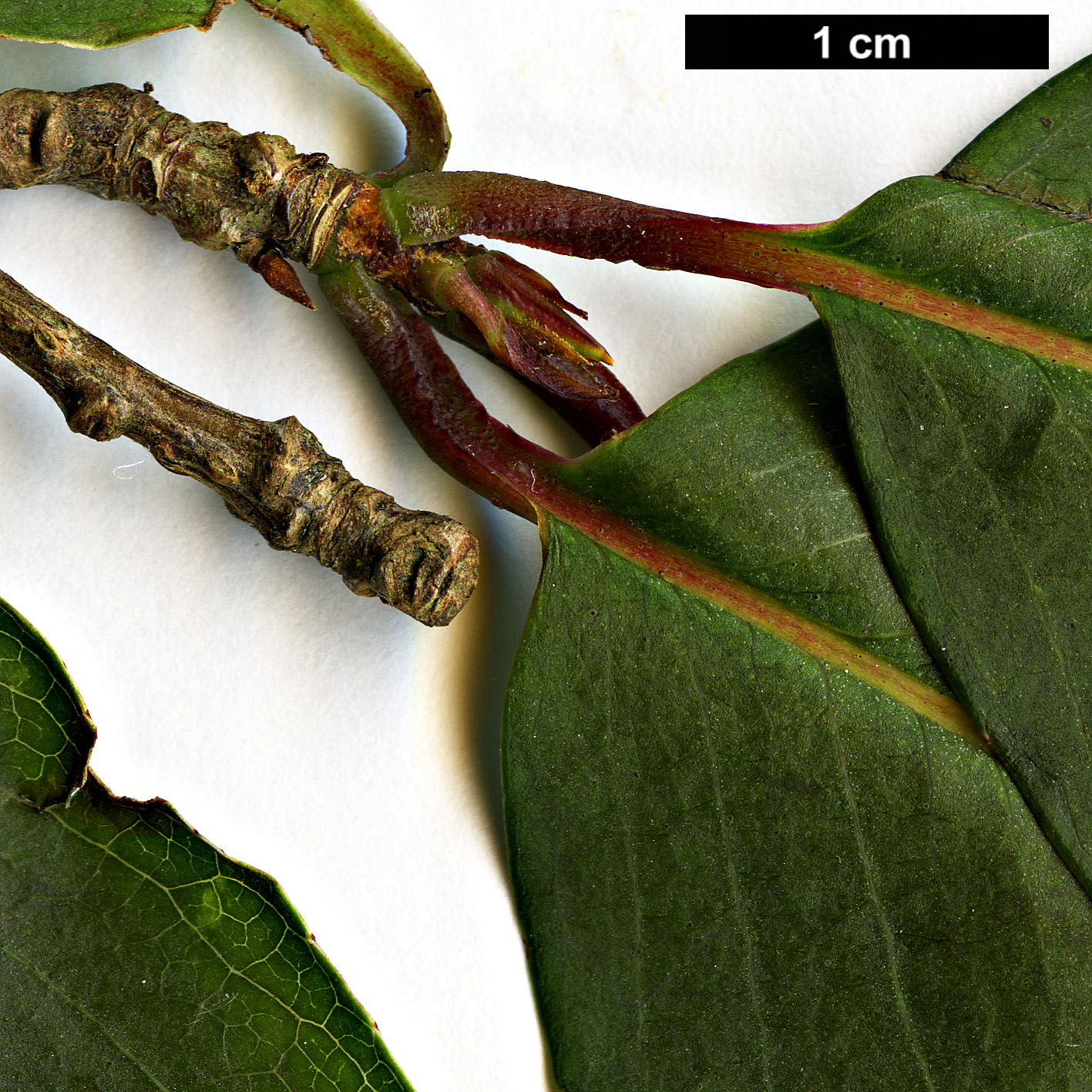Perkinsiodendron macgregorii
Sponsor
Kindly sponsored by
Arabella Lennox-Boyd
Credits
John Grimshaw, Ross Bayton & Tom Christian (2018)
Recommended citation
Grimshaw, J., Bayton, R. & Christian, T. (2018), 'Perkinsiodendron macgregorii' from the website Trees and Shrubs Online (treesandshrubsonline.
Genus
Synonyms
- Halesia macgregorii Chun
Other taxa in genus
Tree to 24 m, 0.45 m dbh. Branchlets purplish brown. Leaves 5–13 × 3–4.5 cm, elliptic to ovate-elliptic, upper surface glabrous, lower surface pubescent when young, later almost glabrous, 10–24 secondary veins on each side of midrib, margins serrate, apex curved, acuminate; petiole 5–10 cm long. Flowers pendulous, ~1.5 cm long; pedicel 0.5–0.8 cm long, slender. Calyx ~3 mm long, corolla tube 1–1.5 cm long, four-lobed, ciliate, stamens eight, four long, four short. Drupe yellowish or brownish red, ellipsoid to ovate, 2.5–4 × 2–3 cm. Flowering March to April, fruiting July to October (China). (Hwang & Grimes 1996).
Distribution China northwest Fukien, northern Guangdong, northern Guangxi, southern Guizhou, southwest Hunan, southern Jiangxi, Zhejiang.
Habitat Damp, shaded areas on forested slopes or at forest edges, between 700 and 1200 m asl.
USDA Hardiness Zone 7b-9
RHS Hardiness Rating H4
Conservation status Vulnerable (VU)
In 2006, Darke stated that what was then called Halesia macgregorii was ‘virtually unknown in Western gardens’ (Darke 2006). Twelve years later, it is more accurate to say that it is little known, but becoming more widely grown especially in North America. It seems to have first been introduced as Index Seminum seed from Shanghai Botanic Garden in or about 1997, with seed distributed to collections in North America and New Zealand.
At the David C. Lam Asian Garden in Vancouver, one seed germinated from a batch from the Shanghai distribution in 1997, collected at 400 m on Hengshan mountain, Hunan. This plant and two clonal descendants were last reported doing very well in Vancouver, standing at 5 m in 2007, with no damage from the difficult winter of 2006–2007 (minimum –9ºC in November, with heavy snow, which slipped off the fully leafed trees without causing damage). The leaves are attractive, with pink petioles and strongly pleated laminas. The first flowers (in 2003) were yellow-green, but in subsequent seasons they have been creamy white.
The late Peter Wharton, to whom we are indebted for this information, commented (pers. comm. 2007) that it is a graceful, elegant tree, with poise, but that its flowers are not equal to those of either Rehderodendron or the American halesias. On the other hand, Don Teese – gardening in the Dandenong Ranges in Victoria, Australia – has observed that trees there flower before the leaves, cf. with the leaves in Halesia, making them more visible and therefore more striking (D. Teese pers. comm., and see images below). Perkinsiodendron macgregorii is also cultivated successfully in North Carolina (T. Lasseigne pers. comm. 2007) and at the Arnold Arboretum, from collections made in 2014 (Arnold Arboretum 2018).
In Europe it remains rare, but recently it has become available from a few select nurseries in the UK (Cubey 2018). The only plant seen in Europe during the research for New Trees was at Tregrehan, Cornwall, and was a vigorous young specimen 2 m tall when seen in 2007. It was sourced from Mike Hudson of Gwavas Station, Hawkes Bay, New Zelaland, and is traceable to the Shanghai distribution. It has since been joined by another with provenance traceable to Nan Ling Shan in northern Guangdong. Tom Hudson tells us that as his pair of trees has matured the flowering has become better and better, and by late 2018 both now stand at c. 8 m tall. He adds that grey squirrels can cause signifcant damage and the trees need to be protected while young, but thus far cold seems not to have been a problem, the trees coming through lows of –6°C unscathed (T. Hudson pers. comms. 2007, 2018).
Another thriving UK specimen grows in the Savill Garden in Windsor Great Park. In November 2018 it was a rather sparsely branched tree of c. 5 m tall and the foliage was still green, with barely a hint of any autumnal colour change (T. Christian pers. obs. 2018). Autumn colour seems to vary enormously with local environmental factors – an excellent tree of c. 8 m (in November 2017) growing in the Church Garden near New Plymouth, New Zealand, colours beautifully (see illustration). This tree is again from the Index Seminum Shanghai distribution of the late 1990s (G. Church pers. comm. 2018), as in Don Teese’s tree in the Dandenong Ranges in Victoria, Australia, which was 14.9 m × 20.3 cm dbh in 2020 (D. Teese pers. comm.).


